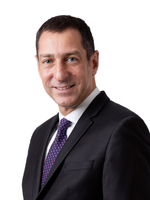Although the insurance group AIA prefers to focus on fixed income investments, its private markets (or alternatives) portfolio is also being utilised to push a development of sustainability and energy transition, according to Mark Konyn, group chief investment officer.

Mark Konyn
AIA
Konyn also believes that private markets, including private lending, will be an area where sustainability and energy transition will become even larger factors.
This means asset managers or general partners (GPs) must step up to the demands from investors.
“Sustainability is burgeoning also in private markets. It’s new and it’s mixed, some partnerships and GPs are more advanced in their thinking about this. Going forward, it’s going to become a requirement.
Therefore, GPs must be highly sensitive to these requirements to get their share of our capital longer term,” Konyn told AsianInvestor.
AIA’s private assets portfolio includes private equity and venture capital, real estate, and private credit, totalling about $35 billion.
Hong Kong-based AIA is a major insurer in Asia, with $268.5 billion in total investments as of the end of 2023. It has a presence in 18 markets across Asia Pacific (APAC).
INFRASTRUCTURE MISMATCH
Although there is a plethora of investment opportunities to lead markets in a more sustainable direction, an insurance group also has to consider its liabilities.
AIA has already deployed billions of dollars in the double-digits, into infrastructure over the last 20 years, both on the equity and debt side. Targeted sectors include transportation, energy, telecommunications, bridges, and toll roads.
Also read: AIA sees investor-led push driving Asia’s energy transition
Konyn recognised the vast amount of funding required for private market infrastructure to ensure renewable energy adaptation and the buildout of energy grids.
These are investments that AIA are keen to explore, but the asset class has its caveats for the insurance group.
“Historically, the cost of funding for infrastructure projects has been particularly low. So, for a private asset owner that’s looking to fund long-dated liabilities, you must be very careful where you choose to play, because you need to match your financial requirements to deliver on your liabilities,” Konyn said.
SPECULATIVE TECHNOLOGY
For a long-term investor such as AIA, there’s a limited risk budget available to allocate to burgeoning technologies. Striking a balance between potential and risk is a key consideration.
“The area of technology can be quite speculative. We talk a lot about ammonia, hydrogen, all sorts of technologies that are going to help with the transition, but it’s not clear yet where the winning technologies are, and how they’re going to be implemented,” Konyn said.
Also read: AIA sets targets to decarbonise power generation portfolio
From a private equity approach, the insurer splits its allocation between a venture capital strategy, a private equity strategy, and a strategy dubbed investing with purpose.
“We can more readily deploy where the technology is already stable and there’s a proven revenue model. We then finance the deployment of those business models that are a little bit more certain, and we can understand the sort of rate of return that we would expect.”
These investments tend to be later stage private equity, even spanning into listed entities with a proven technology.
LOCAL IMPACT
For the investing with purpose strategy, AIA is taking an earlier stage approach in developing and rural markets in Asia, but by applying proven technology.
This is done in partnership with LeapFrog Investments, a private investment firm that invests in high-growth financial services, healthcare, and climate solutions companies in emerging markets.
The investing with purpose strategy extends financing models in rural communities, aiming to accelerate the deployment of alternative energy sources in rural areas.
These areas would otherwise be untouched, because people living there don’t have access to conventional bank accounts, Konyn explained.
“We’re working with partners very much in getting out into those other areas where we think investing with purpose makes real sense as it relates to the transition, but the bulk of our program will go into big projects, where we see proven models and revenue sources that are already well established, but are aimed at getting transition moving, in particular in Asia,” he said.
¬ Haymarket Media Limited. All rights reserved.




